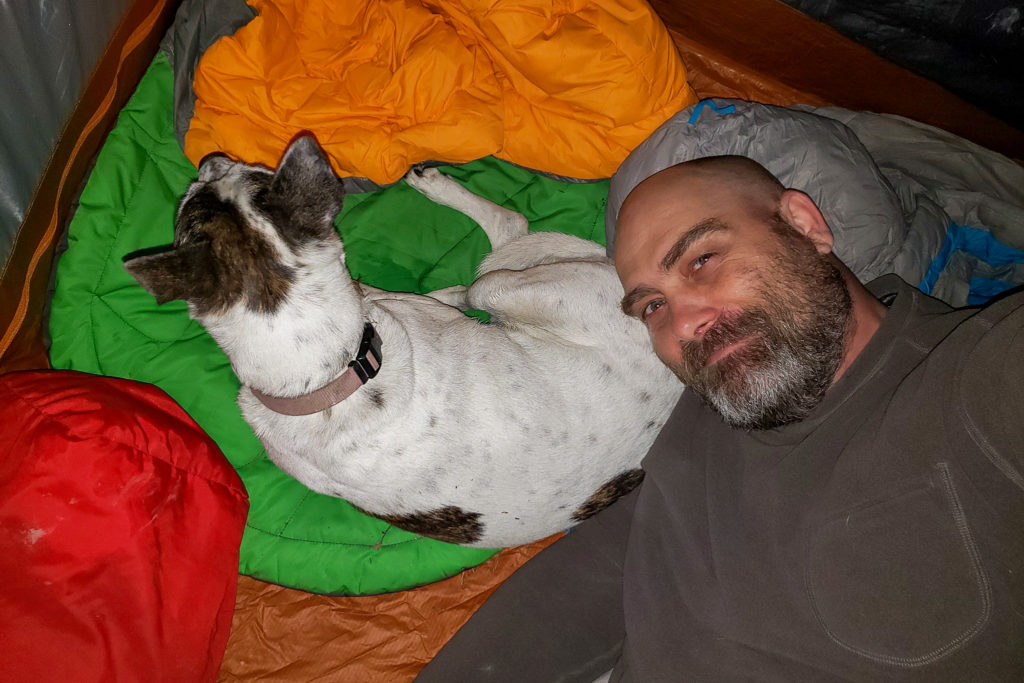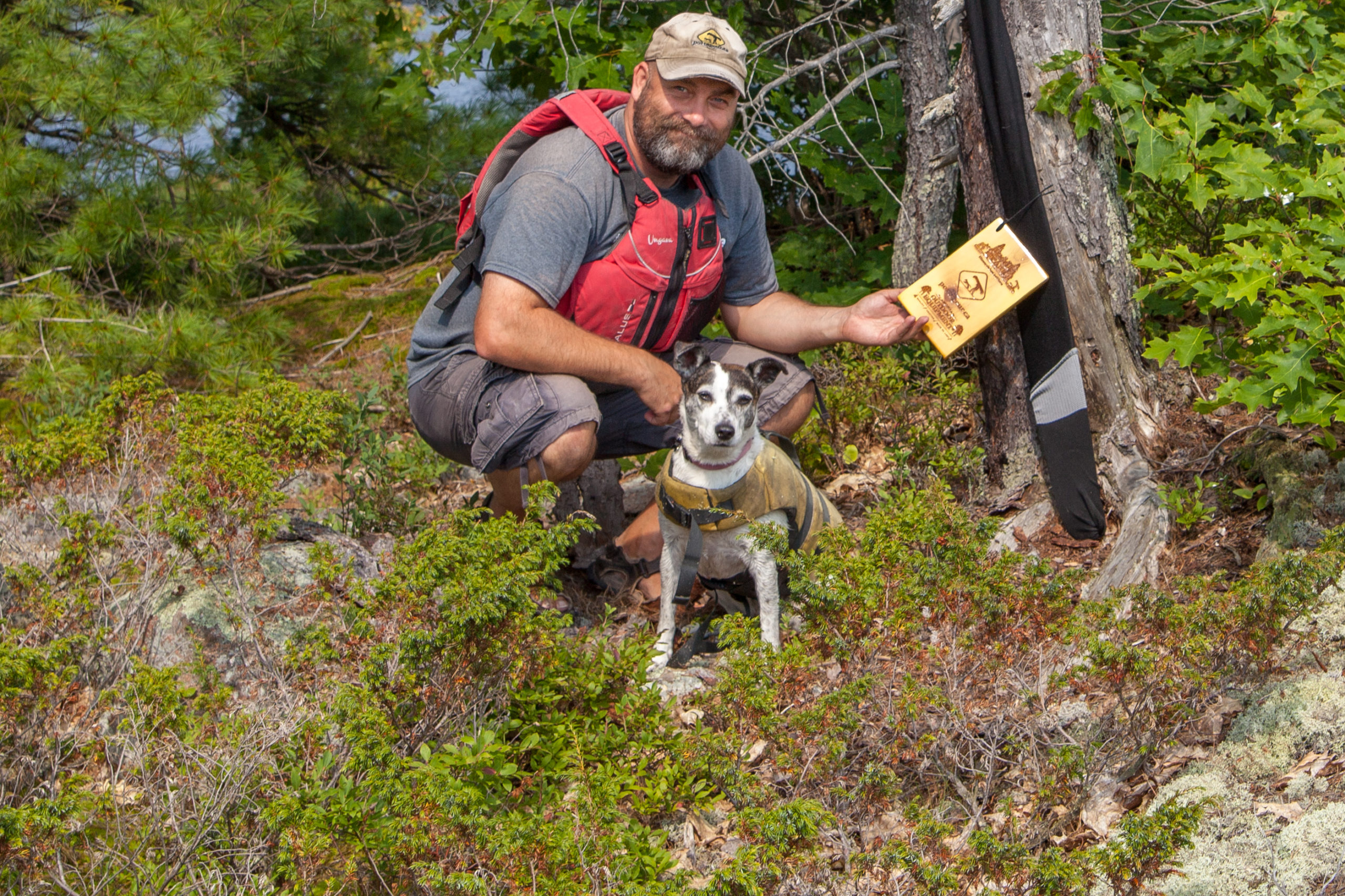Wandering Around Out There With A Canoe On My Head
Wandering Around Out There With A Canoe On My Head


I have to ask. How do you manage a dog on a canoe trip? What do you do with him at night; tie him outside, bring him in the tent?
And never mind keeping him amused in the boat. I can’t imagine either of my borders putting up with that for long…
Hi Roger,
Some dogs take to canoeing a little better than others. I had one dog that wouldn’t stay in the canoe, and would regularly jump out, almost taking us out with him. I let him swim beside the canoe until he was tired enough to rest, but even then it would just start up again later. (And it was very tough trying to pick him up from the water.)
How I got Nancy conditioned was to slowly introduce the idea of being in the canoe for longer periods. I’d take breaks often and give her a chance to run around as a reward. Portaging is great for this, because for her, sitting in the canoe gets rewarded with a chance to run the trails. When in the canoe, I make sure there’s somewhere comfortable for her to sit, like a blanket or a soft pack. Dogs tend to not want to be on the bottom of a canoe because it can get hot, uncomfortably sandy and gritty, and you can’t see anything from down at the bottom.
Of course the best behaved dog is a tired dog – go for a walk before you get in the canoe – with a calm guardian. If you’re stressed (excited) about them in the canoe, they will be as well.
I’ve never had to do this with her in the canoe, but some people have had success with treat-rewarding “Mat Training” (I did on land and the behaviour kind of carried over a bit, I like to think). (eg https://www.youtube.com/watch?v=i9p8kR3n4hc – I didn’t watch the whole thing, but it gives you an idea.) And if you’re camping with treats, avoid keeping them in your clothes pockets (use plastic bags) and make sure they go in the food bag – they’re designed to smell good to animals. 🙂
As for camping, I find that most dogs are pretty natural campers – but of course there are always exceptions. They like to get the lay of the land, and I leave Nancy to explore a bit when we get to camp. She now has the routine down, that this general area is home for tonight. And she likes to protect it that way too. 🙂 But of course there’s always the wanderer dogs that take off and scare you like they won’t come back. Island sites are great for this, because they can’t really get that far, and you can feel comfortable letting them run off and explore.
At night Nancy sleeps in the tent. She’s pretty good now, but I used to bring her mat with me to keep her from scratching the bottom of the tent (and the training made her more comfortable). My biggest challenge was to keep her from charging out of the tent (or again, scratching her way out), so I kept a leash on her, blocked the door with my body and practiced making sure she was calm before unzipping the tent.
I wouldn’t tie the dog outside. Not to get into too much details, but I’ve heard too many stories about the other animals taking advantage of a tied dog.
I think the best advice I can give is to make a comfortable spot in the canoe, do some mat training – if you can, have one person paddle and the other concentrate on rewarding the dogs for being still – and start with short trips with stops for exercise and peeing, then gradually increase the distances.


Session expired
Please log in again. The login page will open in a new tab. After logging in you can close it and return to this page.